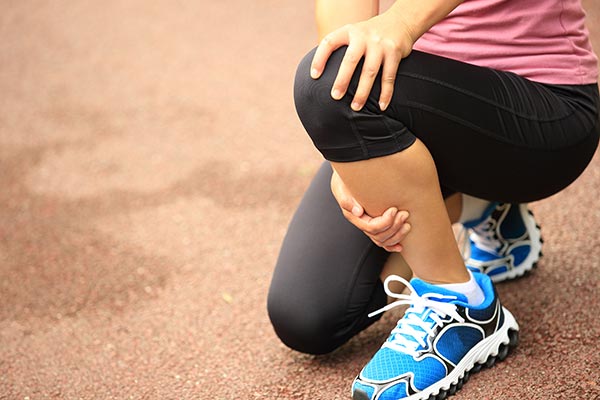Your knees may become damaged due to wear and tear, sporting injuries, degenerative diseases like arthritis, trauma or repetitive damage. Ageing and lifestyle choices can also take their toll on your knee joints. Structural abnormalities from birth can also cause knee problems.
Knee conditions are commonly associated with athletes and those that enjoy sports, as they are more prone to knee sports injuries such as anterior cruciate ligament rupture caused by repetitive jumping, running or cycling. Overuse injuries are also common in sportsmen and women.

Common knee conditions
Our specialist consultants treat all types of conditions affecting the knee, including:
Anterior cruciate ligament injuries
The anterior cruciate ligament is one of the major knee ligaments. It can become torn or sprained, often during sports involving sudden stops or changes of direction, jumping or landing, such as football or skiing.
Arthritis (osteoarthritis)
Arthritis of the knee is caused by the loss of cartilage around the surfaces of the joint. The result is that the knee joint doesn’t move smoothly and may become stiff and painful. Arthritis is a degenerative condition which means it worsens over time.
Knee cartilage injuries
Damage to the knee cartilage (also called meniscal tears) often occur during sports and can be the result of a twisting the knee while the foot is still on the ground. Symptoms include pain and locking of the knee.
Knee dislocation
Your knee may dislocate when the three bones of your knee joint become misaligned, either as the result of a traumatic injury or due to an abnormality from birth. A dislocated knee is a serious injury that can cause extensive damage.
Knee ligament injuries
Ligaments are tough bands of tissue that connect bones. There are four ligaments in the knee which are prone to injury, particularly during high impact sports. Symptoms include sudden, severe pain.
Knee tendon injuries
Tendons are strong, flexible bands of tissue connecting muscles to bones. They can develop tiny tears due to overuse (tendinopathy) particularly during sports like rugby, skiing and tennis.
Kneecap (patella) dislocation
The kneecap sits on the front of the knee, gliding over a groove in the joint when you bend and straighten your leg. It can become dislocated, causing the kneecap to slip out of the groove and damaging surrounding tissues.
Kneecap (patella) fracture
The kneecap can become fractured if you fall heavily onto your knee or receive a direct blow to the patellar. This is a serious injury that can make it impossible to straighten the knee.
Kneecap (patella) instability
Instability can occur if the groove in the kneecap is too shallow or uneven, causing the patellar to partially or completely dislocate. Knee dislocation often damages the underside of the kneecap leading to patellar instability.
Meniscal tears
The meniscus is one of two crescent-shaped pads of cartilage in your knee joint. They can become torn as the result of a traumatic injury or through wear and tear. Meniscal tears are graded according to how severely torn the cartilage is.
Sports injuries and trauma
The knee joint is particularly susceptible to injuries and trauma during high impact sports like football, rugby, tennis and skiing. It is important to seek early treatment to avoid exacerbating the injury.
Read about private knee treatment at Harley Street Specialist Hospital.



